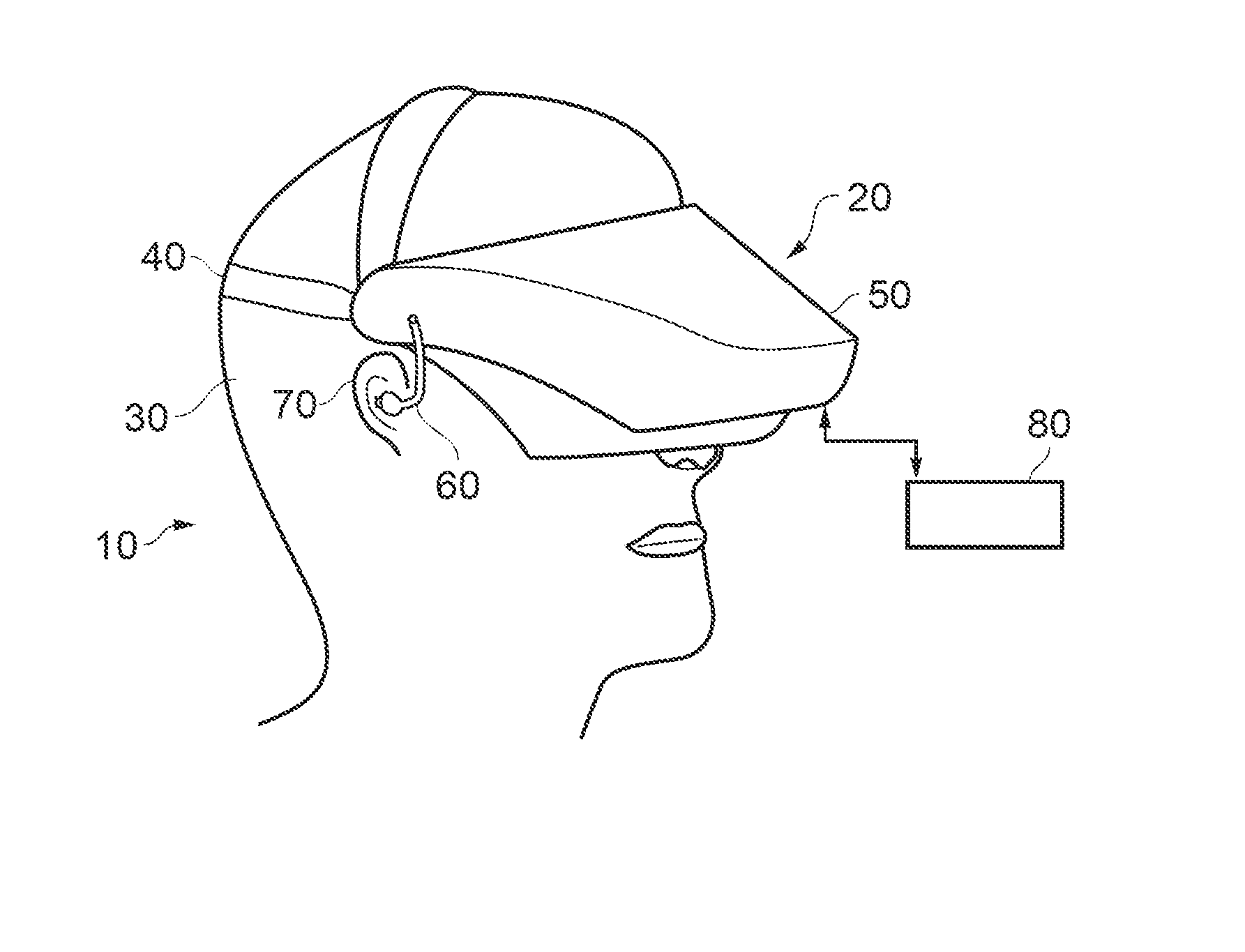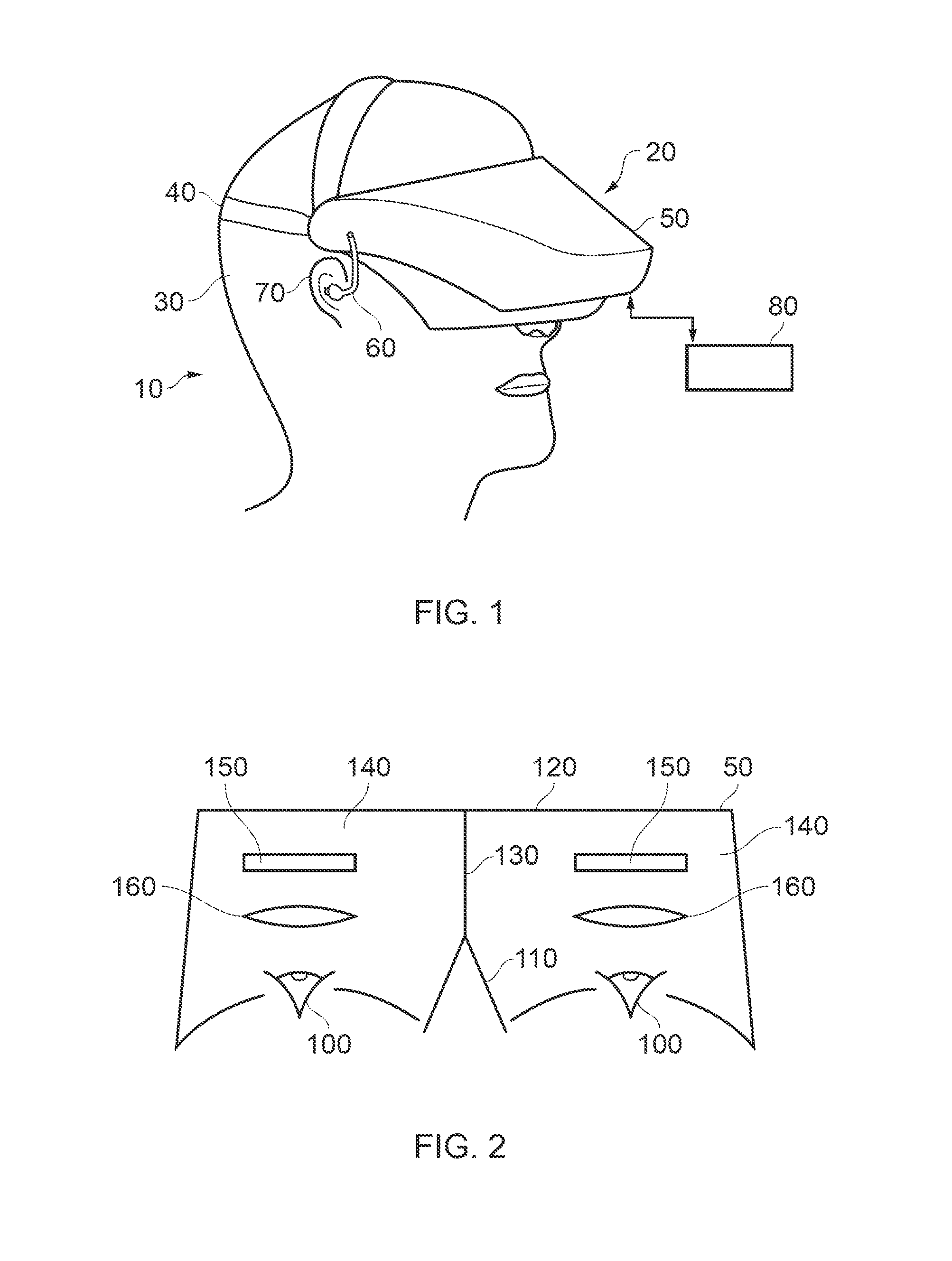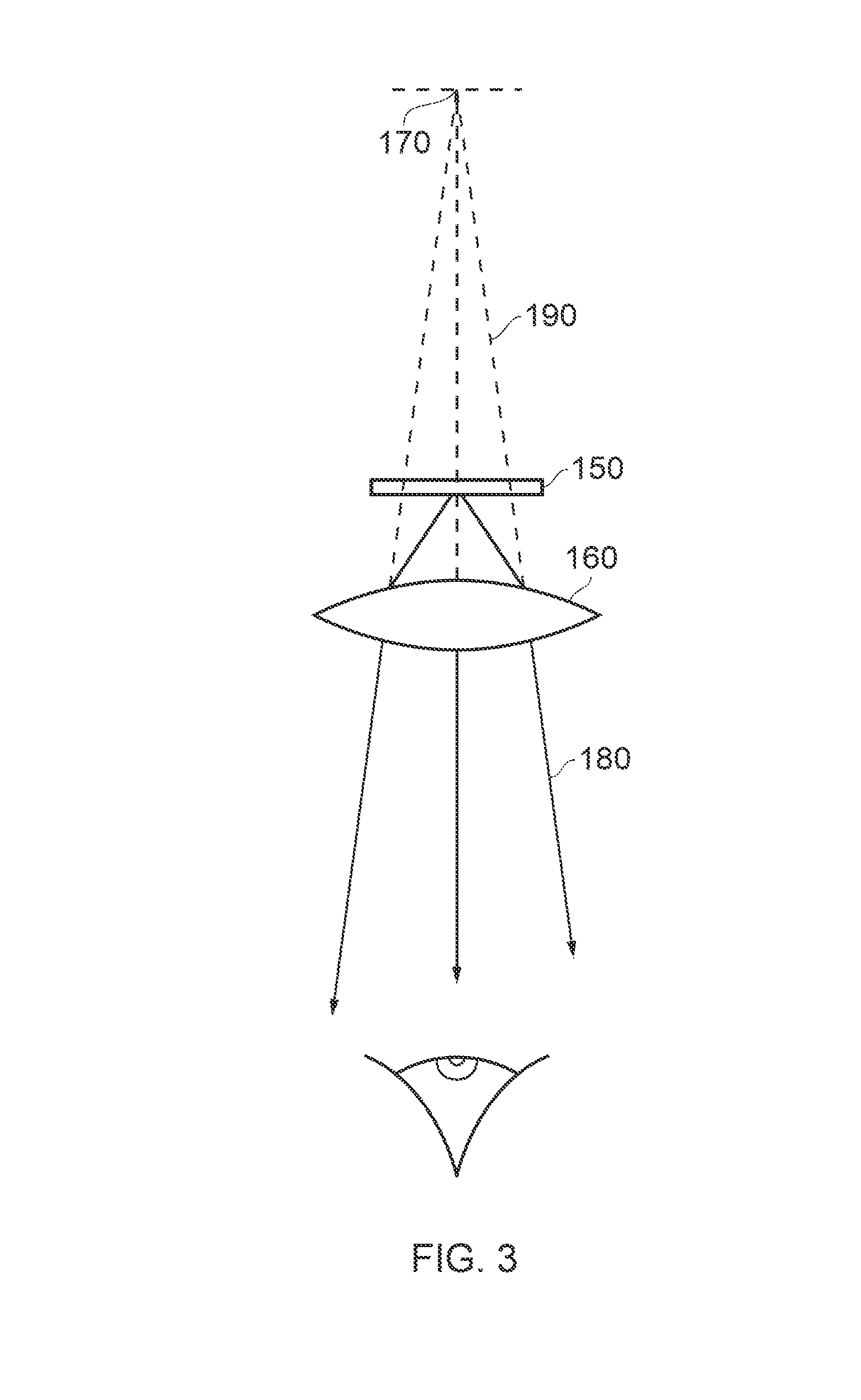Head mountable display
a display and display element technology, applied in the field of head mountable displays, can solve the problems of so-called retinal rivalry and the practical limits of the extent to which the display elements of the hmd can be toed-out, and achieve the effect of reducing luning, accurately and realistically, and improving the mitigation of luning
- Summary
- Abstract
- Description
- Claims
- Application Information
AI Technical Summary
Benefits of technology
Problems solved by technology
Method used
Image
Examples
Embodiment Construction
[0039]Referring now to FIG. 1, a user 10 is wearing an HMD 20 on the users head 30. The HMD comprises a frame 40, in this example formed of a rear strap and a top strap, and a display portion 50.
[0040]The HMD of FIG. 1 completely obscures the users view of the surrounding environment. All that the user can see is the pair of images displayed within the HMD.
[0041]The HMD has associated headphone earpieces 60 which fit into the users left and right ears 70. The earpieces 60 replay an audio signal provided from an external source, which may be the same as the video signal source which provides the video signal for display to the user's eyes.
[0042]In operation, a video signal is provided for display by the HMD. This could be provided by an external video signal source 80 such as a video games machine or data processing apparatus (such as a personal computer), in which case the signals could be transmitted to the HMD by a wired or a wireless connection. Examples of suitable wireless conn...
PUM
 Login to View More
Login to View More Abstract
Description
Claims
Application Information
 Login to View More
Login to View More - R&D
- Intellectual Property
- Life Sciences
- Materials
- Tech Scout
- Unparalleled Data Quality
- Higher Quality Content
- 60% Fewer Hallucinations
Browse by: Latest US Patents, China's latest patents, Technical Efficacy Thesaurus, Application Domain, Technology Topic, Popular Technical Reports.
© 2025 PatSnap. All rights reserved.Legal|Privacy policy|Modern Slavery Act Transparency Statement|Sitemap|About US| Contact US: help@patsnap.com



